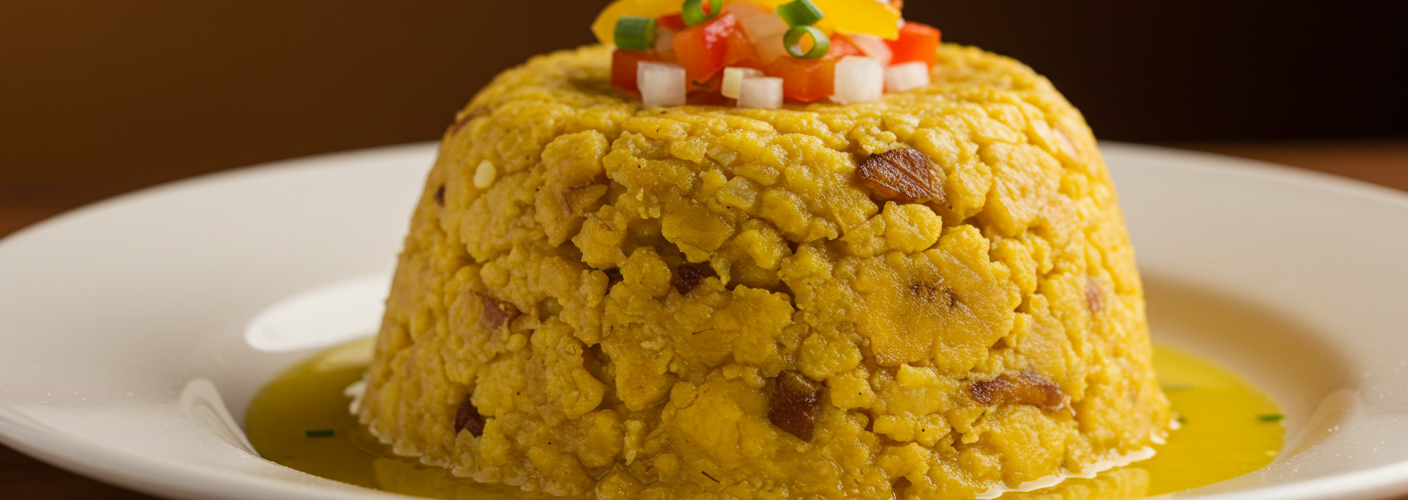When it comes to iconic dishes in the Dominican Republic, few can rival the beloved mofongo. This culinary treasure mixes simplicity with bold flavors, making it a staple across the country and among foodies everywhere. Primarily made from fried plantains, mofongo is an exquisite example of how traditional ingredients can be transformed into something extraordinary.
What is Mofongo?
Mofongo is a dish that involves green plantains, which are fried to a golden crispiness before being mashed together with garlic, salt, broth, and olive oil. The result is a deliciously creamy and savory concoction that boasts a rich texture and a tantalizing flavor profile. What truly sets mofongo apart is its versatility; while the base remains the same, the dish can be customized with various fill-ins such as chicken, shrimp, pork, or vegetables, offering something for every palate.
The Preparation Process
Preparing mofongo begins with selecting the right green plantains. They should be firm and unripe, ensuring that they hold their shape when fried. After peeling and slicing the plantains, they are deep-fried until golden brown. The frying process not only cooks the plantains thoroughly but also enhances their natural sweetness and adds a delightful crunch.
Once fried, the plantains are then mashed together with a generous amount of garlic and salt. This step is where the flavors begin to mingle. Next, broth—typically chicken or vegetable—is added to create a smooth consistency. A drizzle of olive oil elevates the dish, imbuing it with richness and a hint of fruitiness.
Traditionally, the mofongo is molded into a spherical shape, often using a wooden mortar and pestle known as a pilón. This technique not only provides a distinct appearance but also helps integrate all the ingredients thoroughly, ensuring a balance of flavors in every bite.
Serving Ideas
Mofongo is usually served with a variety of accompaniments that range from sautéed vegetables to stewed meats. One of the most popular pairings is “chicharrón,” which consists of crispy pork skin. When combined, the crunchy texture of chicharrón complements the soft, garlicky plantain mash beautifully.
For seafood lovers, shrimp or crab in a light sauce paired with mofongo adds a delightful layer of flavor that balances well with the dish’s savory notes. Vegetarians can enjoy mofongo with sautéed mushrooms or topped with a rich vegetable stew, making it a versatile option suitable for everyone.
Cultural Significance
Beyond its delicious taste, mofongo holds cultural significance in Dominican cuisine. It represents a fusion of African, Spanish, and Taino influences, encapsulating the rich history of the Caribbean. The process of making mofongo has been passed down through generations, often reserved for family gatherings and festive occasions.
In contemporary dining, mofongo can be found in both high-end establishments and humble roadside eateries, showcasing its universal appeal. Whether you’re enjoying a plate at a cozy restaurant or preparing it at home, mofongo is a delightful and heartwarming experience that embodies the spirit of Dominican hospitality.
Conclusion
Mofongo stands as a testament to the ingenuity of Dominican cuisine. With its simple yet flavorful ingredients, this dish captures the essence of the Dominican Republic’s culinary heritage. Whether you’re a seasoned chef or a curious foodie, there’s no better time to dive into the world of mofongo and indulge in its unique flavor!




Add comment